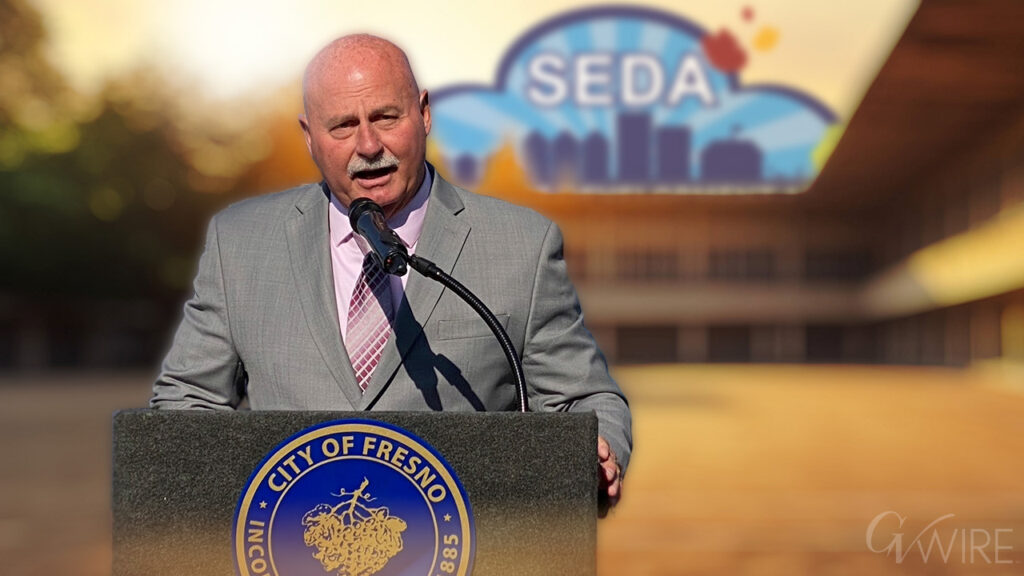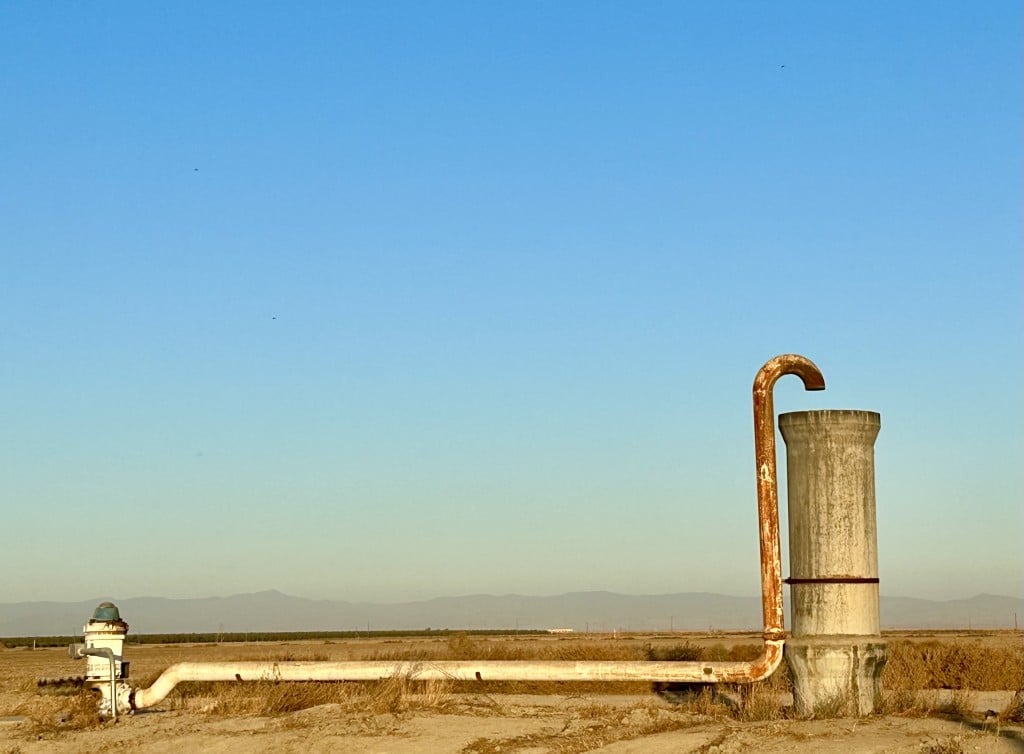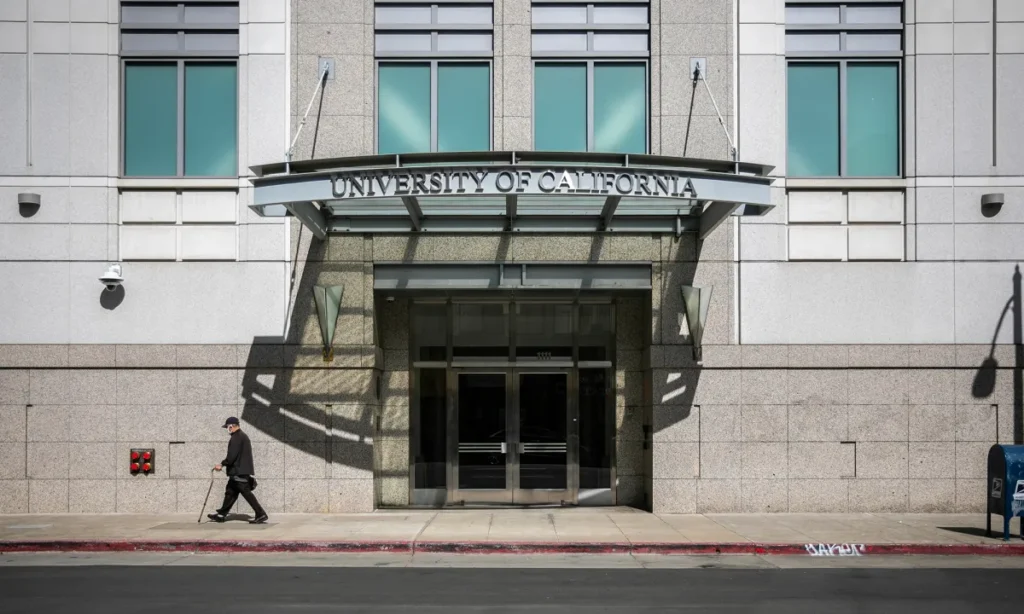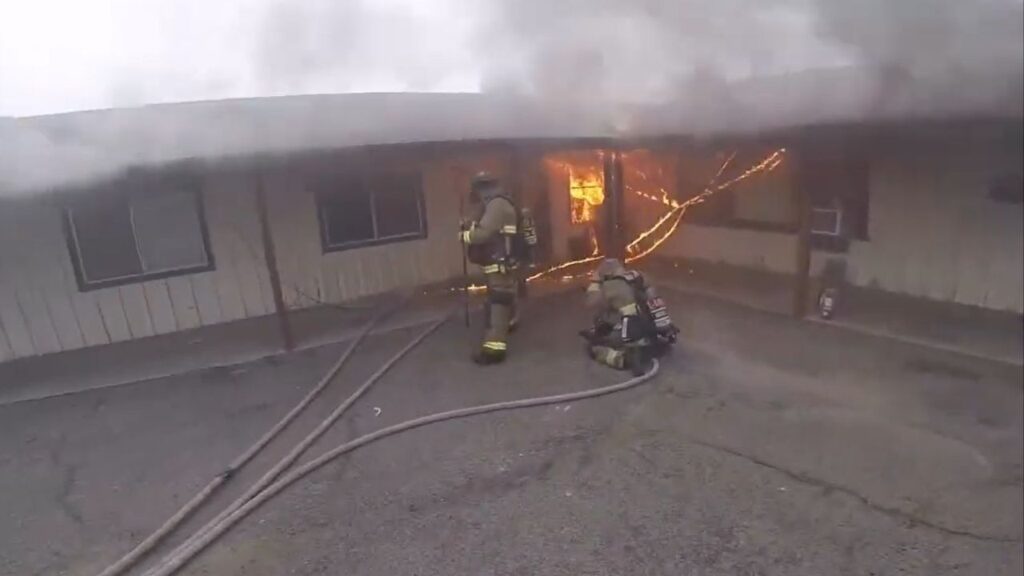Maggie Neilson, whose home insurer elected not to renew her coverage months before the fires, visits the ruins of her 1924-built home in the Pacific Palisades neighborhood of Los Angeles on April 24, 2025. The only insurer Neilson could find was the state FAIR plan, which charged her about 40% more, for about 40% less coverage. She now expects to receive $1.5 million for a rebuild that is likely to cost around $3 million. (Mark Abramson/The New York Times)

- New York Times investigation reveals insurers can load up on coverage in areas the state considers to be safer and still qualify to charge higher rates.
- Insurance companies will be able to raise rates and off-load billions of dollars in costs and liabilities to ratepayers while taking on few, if any, new customers in high-fire-risk areas.
- The percentage of Realtors reporting that they had deals in California fall through for lack of insurance has more than doubled since 2023, to 16.6%.
Share
|
Getting your Trinity Audio player ready...
|
LOS ANGELES — Even before the devastating wildfires that ravaged Los Angeles this year, companies that insure the ever-growing number of homes perched in California’s fire-prone foothills were threatening to abandon the state, declaring that the risks were becoming unsupportable.
The prospect of uninsurable homes was an existential threat for the state. A collapse in its $446 billion real estate economy would bring California to its knees. Gov. Gavin Newsom’s administration went into crisis negotiations with the insurance industry and emerged in September 2023 with what was billed as a “historic” compromise, one that would reward insurers with higher rates in exchange for protecting homeowners in neighborhoods that climate change was turning into tinder boxes.
The central promise was that insurers would have to write policies in fire-prone areas at a rate equal to at least 85% of their market share across the state. But a New York Times investigation has found that a series of loopholes quietly negotiated by the insurance industry all but eliminated that guarantee.
Vast swaths of the designated areas where insurers must write new policies do not in fact overlap with areas that California’s state fire marshal deems to be the most fire-prone, the investigation found, meaning that insurers can load up on coverage in areas the state considers to be safer and still qualify to charge higher rates.
As a result, insurance companies will be able to raise rates and off-load billions of dollars in costs and liabilities to ratepayers while taking on few, if any, new customers in high-fire-risk areas.
And while the regulations were billed as an attempt to get homeowners off the state’s overburdened last-resort insurance program, FAIR, the number of residential FAIR policies has nearly doubled since the new insurance deal was announced, rising to 625,033 from 320,581, the Times review found.

New Rules Reward Insurers for Nonrenewals
Some insurers began minimizing their potential losses even before the new regulations were finalized. In the six months after the deal was announced, California’s three largest insurance groups informed the state of their plans to dump nearly 50,000 existing policies, five times the number filed by those companies in the 20 months preceding the deal. And the new regulations will effectively reward them for doing it.
More than a fifth of the nonrenewals — about 11,000 policies in total — were in ZIP codes within or adjacent to areas that would burn in the January fires, the Times analysis found. The vast majority of those were in and around Pacific Palisades, where fire later destroyed more than 6,800 structures.
Proponents of the new rules said they would allow rates to reflect the risks of hotter, drier weather and provide a business case for insurers to offer policies in high-risk areas. Representatives for Farmers Insurance, one of the few companies that agreed to discuss the regulations, praised them as a “return to a more effective rating regime” that “will bring positive change to the California insurance marketplace.”
Ricardo Lara, California’s elected state insurance commissioner who led the drafting of the new rules, said the state was “in crisis mode” when it negotiated the new regulations, with seven of the 12 top insurers in the state halting or restricting the writing of new policies in California.
He said the new rules would offer tens of thousands of Californians the chance to purchase protection for their homes that might otherwise have been unavailable at any price.
Confronted with the Times’ findings about ways insurers could shortchange their promises to insure in high-risk areas, Lara conceded that the rules might not deliver the hoped-for outcomes immediately. Insurers, he said, had “bullied” the state as it drafted the new rules. But he predicted that as rates rose, competition would eventually push insurers back into writing policies in high-risk zones.
The Power of the Insurance Commissioner
From the insurance industry’s perspective, the roots of the current crisis can be traced back to 1988. Voters passed an initiative that year that made California one of about a dozen states where homeowners’ insurance rate increases must be preapproved by an elected insurance commissioner. The industry has long complained that the system keeps rates in California artificially low.
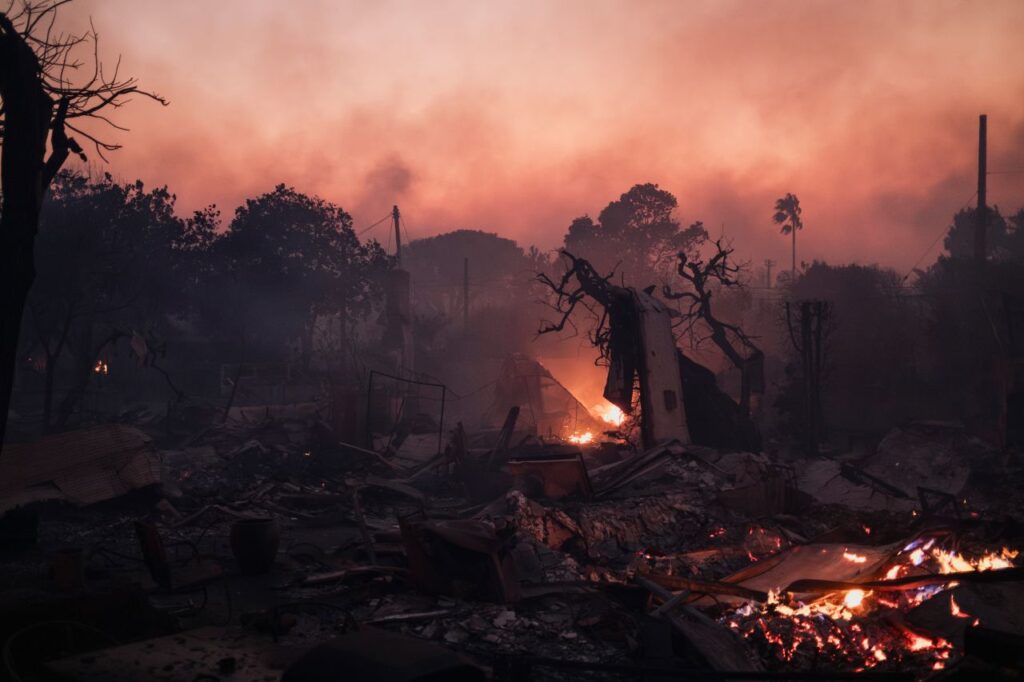
By the early spring of 2023, when Newsom began meeting with industry lobbyists, some of California’s largest property insurers had already stopped or curtailed writing new business in the state. State Farm and Farmers, which together comprise one-third of the market, started pulling back in May and July of that year.
Existing policies were not affected, but the changes meant that homebuyers were left with few options for insuring their new properties other than the FAIR plan, a consortium of all the companies licensed to offer property insurance in the state. FAIR is required by law to sell bare-bones fire policies to people who can’t find coverage in the regular market. Insurers share any profits from FAIR in good times but must cover all of its losses.
It was generally agreed that FAIR was not a solution. Its lean policies rarely covered the actual cost to rebuild a home, even though they generally cost more than regular policies.
Insurers made it clear that big, regulatory changes were needed to keep them in the market, addressing rising construction costs as well as climate change.
But the deal with insurers contained an unambiguous promise: If carriers wanted to charge higher rates, they would have to write policies in “fire zones” at a rate “no less” than 85% of their statewide market share.
Writing Policies for Distressed Zip Codes
If a carrier’s statewide market share is 20%, for example, its share in designated distressed areas would have to be at least 17%.
To reach the 85% standard, insurers can offer policies to homeowners currently on the FAIR plan, though nothing requires them to do that. Or they can write policies anywhere in a list of 662 distressed ZIP codes.
Some of those ZIP codes neatly overlap the state’s high-fire-risk zone maps. But the Times analysis found that many “distressed” ZIP codes extend well beyond the riskiest fire zones. The 90063 area, for instance, is in the dense heart of urban East Los Angeles, with only a small sliver overlapping areas deemed at high risk of a blaze — and that sliver has no homes in it at all.
And half of California’s 58 counties qualify under the regulations as “distressed” in their entirety, even though only a minority of the single-family homes located within them are in high or very high fire risk zones. Yet insuring any of them would help a company meet the 85% target.
In more than 100 of the state’s distressed ZIP codes, fewer than a third of single-family homes are in high-fire-risk zones, the Times analysis found. In more than 70 of the ZIP codes, less than 10% of homes are in those zones.
Insurers that cannot or choose not to meet the 85% requirement can still qualify for the new rate increases. A pair of what industry lobbyists called “off-ramps” were negotiated as alternatives to the 85% rule. Insurers can claim hardship and petition the commissioner for a waiver; or they can take advantage of an option, originally intended just for small companies, that requires only that they increase the number of policies they have in the designated distressed zones by 5% over the previous year.
Eight days after the deal was announced in September 2023, Foremost Insurance reported it had already begun to drop policies in fire-prone areas across the state.
Over the following five months, as Lara’s office was writing the regulations, three insurers followed suit: Farmers Insurance, CSAA and State Farm.
These companies told Lara they would be dropping more than 50,000 policies in more than 800 ZIP codes, heavily concentrated in the most fire-prone areas of the state.
This was a different thing entirely than declining to write policies for new customers. It meant that even people whose homes met underwriting standards and who had paid their premiums on time weren’t safe.
Newsom was frustrated, aides said. Insurers had issued nonrenewals in large numbers before, but this wave came after the industry and the state had struck their deal.
Lara said in an interview that he was angry, too. “I was livid, and yes, I did feel like we were being bullied,” he said. But whatever he felt privately, he said little in public, telling the Times that he felt it would be counterproductive to berate the very companies he was trying to woo back.
The Fatal Flaw in the Deal
Yet the state effectively rewarded their behavior by grandfathering in the nonrenewals when it finalized the regulations. Companies like State Farm and Foremost that had dumped more than 5% of their customers in fire zones could now add back that 5% — perhaps in a lower-risk part of a ZIP code — and still qualify to charge the new higher rates.
By the time the department put the finishing touches on the regulatory package in December 2024, the state had offered two additional carrots to the industry. One was a cap on the amount of wildfire-related losses that insurance companies composing the FAIR plan previously had to shoulder. Now anything above $500 million would have to be borne by residential policyholders across the state. The other was to let insurers factor into their rate calculations the cost of reinsurance, which they buy to hedge the risk of an expensive catastrophe.
Consumer Watchdog, an advocacy group that by law represents California policy holders in rate hearings, estimated that the reinsurance provision alone could raise premiums by an additional 40%.
Eight days after state officials put the final piece of the new regulations into place, wildfires swept through Los Angeles.
Insurers already have applied to charge their residential customers $425 million in losses incurred by the FAIR plan in the January fires, based on the new pass-through approved by Lara. Consumer Watchdog has filed a lawsuit challenging those assessments.
Meanwhile, the number of homeowners resorting to the FAIR plan has not gone down, as hoped, but doubled. Operators of the plan last month asked for a rate increase of nearly 36%. Nor have homebuyers found it any easier to obtain insurance. The percentage of Realtors reporting that they had deals fall through for lack of insurance has more than doubled since 2023, to 16.6%.
This article originally appeared in The New York Times.
By Jo Becker, Jeremy Singer-Vine, Katie Benner and Laurel Rosenhall/Mark Abramson
c.2025 The New York Times Company
RELATED TOPICS:
Categories






